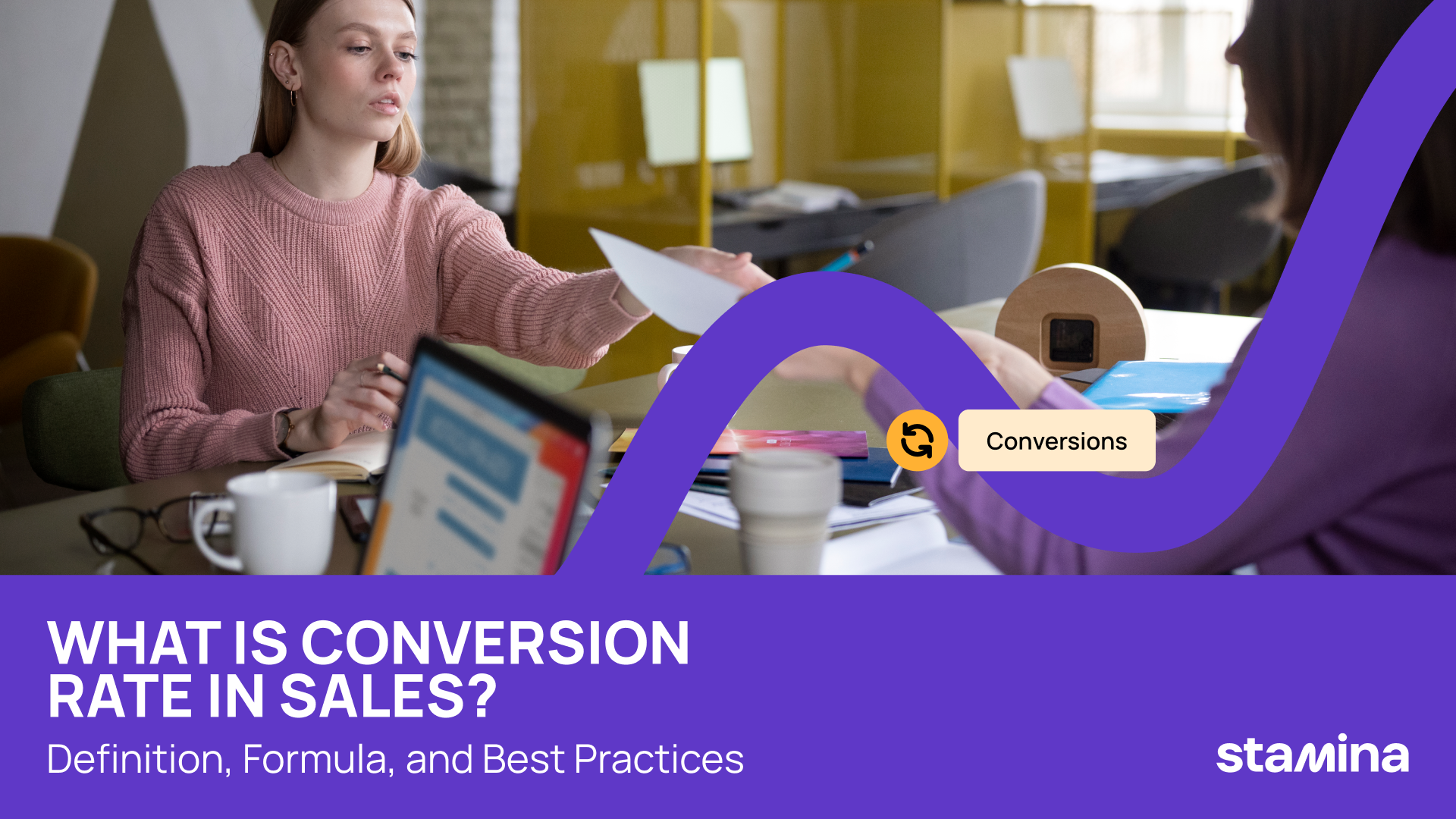Ever wondered why two sales teams with the same number of leads can produce wildly different results? The answer often lies in one key metric: conversion rate. It’s not just a number; it’s the clearest indicator of how effectively your team turns prospects into paying customers.
Companies that excel at lead nurturing generate more sales-ready leads at a lower cost. And yet, only a small number of businesses are satisfied with their conversion rates. That means there’s a huge opportunity waiting for most companies, especially if you know how to measure and optimize it correctly.
What is Conversion Rate in Sales?
The conversion rate in sales is a metric that shows how well the sales team turns potential customers into buyers. In simple terms, the sales conversion rate indicates the percentage of leads that become customers. A higher conversion rate means more effective sales efforts.
While lead generation is mainly the responsibility of marketing teams, the sales team’s role is to turn those leads into paying customers. For example, if the marketing team generates 100 leads and the sales team converts 20 of them into customers, the conversion rate will be 20%.
Whether the conversion rate is good or bad, you need to decide based on the past performance and industry benchmarks.
Why Does Conversion Rate Matter?
Sales conversion rate is a key performance metric that aligns marketing and sales teams. A higher conversion rate means your sales team is not just attracting attention, but closing deals and turning more leads into actual buyers.
The key benefits of measuring the sales conversion rate include:
- Boosted revenue growth without new lead generation.
- Lower Customer Acquisition Cost (ACA) with improved sales efficiency and less spending per customer.
- Enhanced sales funnel transparency.
- Achieved higher marketing return on investment (ROI) by attracting real paying customers instead of just increasing interest.
- Data-based decision making through testing and measuring what works and what doesn’t.
How To Calculate Conversion Rate?
The sales process is not the same in all industries. The conversion rate is driven by how buyers from each industry and sector behave; some make faster decisions, while others prolong the sales cycle.
Industries like B2C and eCommerce close deals faster with quick decision-making and can positively impact sales conversion rates. Conversely, B2B and enterprise-level industries tend to deliver lower performance for sales teams, as they involve multiple decision makers and complex decision-making stages.
The average conversion rate varies from industry to industry and from market to market. Recent studies have shown that sales conversion rate varies from 13% to 25% based on the industry, product or service price point, and acquisition channel. Low-ticket purchases (under $10K) convert at about ~25.7%, while High-cost deals (over $5M) can even convert at 9.1%.
To better understand the sales conversion rate of your business and shorten the sales cycle, you can use the basic formula for calculating the conversion rate:
Sales Conversion Rate=(Qualified LeadsNumber of Sales)×100%
For instance, if your team closes 50 deals from 200 qualified leads, your conversion rate is
(50÷200)×100=25
Best Practices to Improve Sales Conversion Rate
Boosting the sales conversion rate is an effective way to increase business revenue without the need for additional lead generation.
A higher conversion rate leads to maximizing sales and marketing ROI and outreach efforts.
To achieve this, businesses need to adopt and use best practices addressing each stage of the sales funnel.
1. Perform Accurate Lead Qualification
Not all leads are of the same caliber. That’s to say, some leads can be qualified for your business, and some may not.
Early lead qualification, based on data such as engagement history, past purchase behavior, and pain points, enables sales teams to focus on leads that are likely to convert to customers and bring value to your business. A tool like an all-in-one CRM system can help you qualify leads at an early stage and save time and resources on leads that will not bring value.
2. Align Sales and Marketing
A disconnection between sales and marketing departments can hurt conversion rates. Numbers say that companies that rely on sales and marketing alignment achieve up to 67% higher conversion rates. Shared goals, clear lead definitions, and collaborative content strategies ensure leads are properly nurtured before reaching sales.
Adobe is a vivid example of how sales and marketing alignment, through shared KPIs and unified data platforms, can increase conversions across digital experience products.
3. Conduct Personalized Outreach
Today’s buyers expect personalized experiences. Drift and Intercom, two B2B SaaS leaders, have significantly improved their conversion rates by customizing demo experiences based on a lead’s behavior, company size, and industry.
Personalization can also include tailored email sequences, case studies, and pricing discussions, building trust and relevance with the buyer.
4. Shorten the Sales Cycle
The longer a deal drags on, the more likely it is to fall through. You can shorten the sales cycle by streamlining proposals, improving internal handoffs, and using digital contract tools like DocuSign or PandaDoc can reduce friction.
5. Use Data to Identify Inefficiencies
Modern businesses rely on real-time analytics to monitor drop-off points in the sales funnel. This insight helps teams optimize pitch strategies, improve objection handling, and refine product messaging. AI-driven call analytics offering tools can reveal what top performers do differently, enabling continuous improvement.
Final Thoughts
Improving your conversion rate isn’t about working harder; it’s about working smarter. By qualifying better leads, aligning teams, personalizing interactions, and leveraging data, companies can dramatically improve performance without expanding lead volume. Leading organizations already do this. Now it's your turn.



